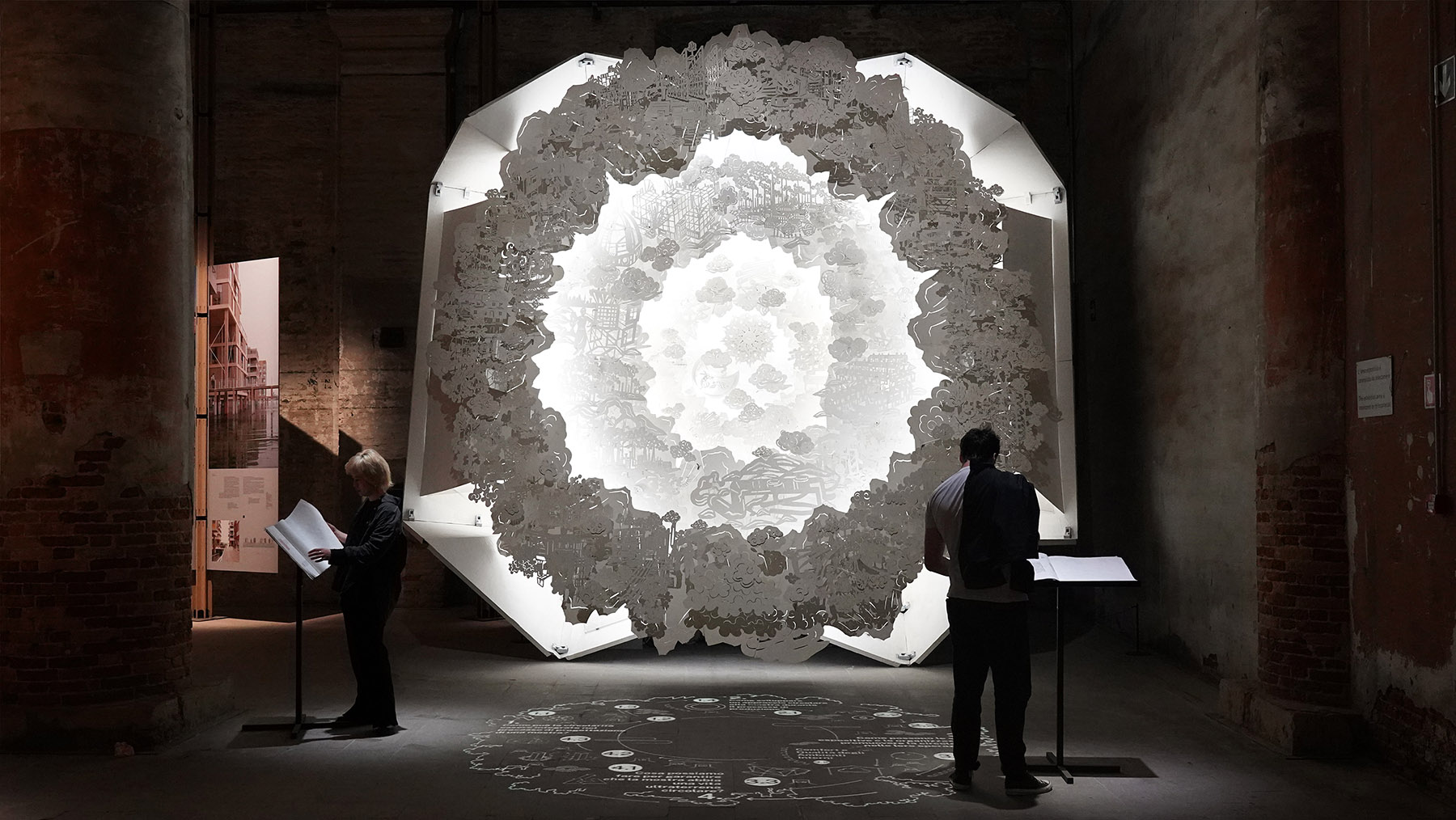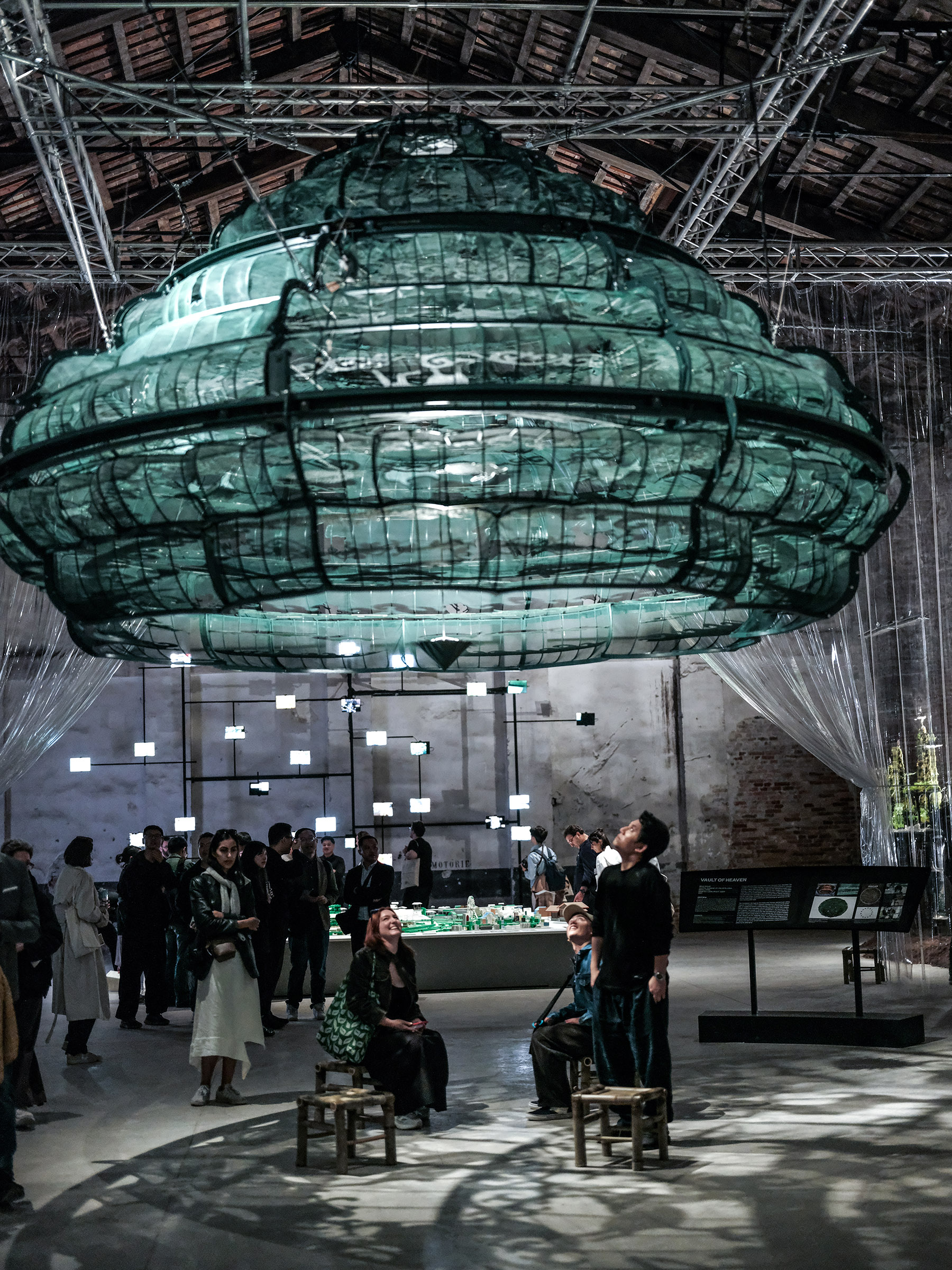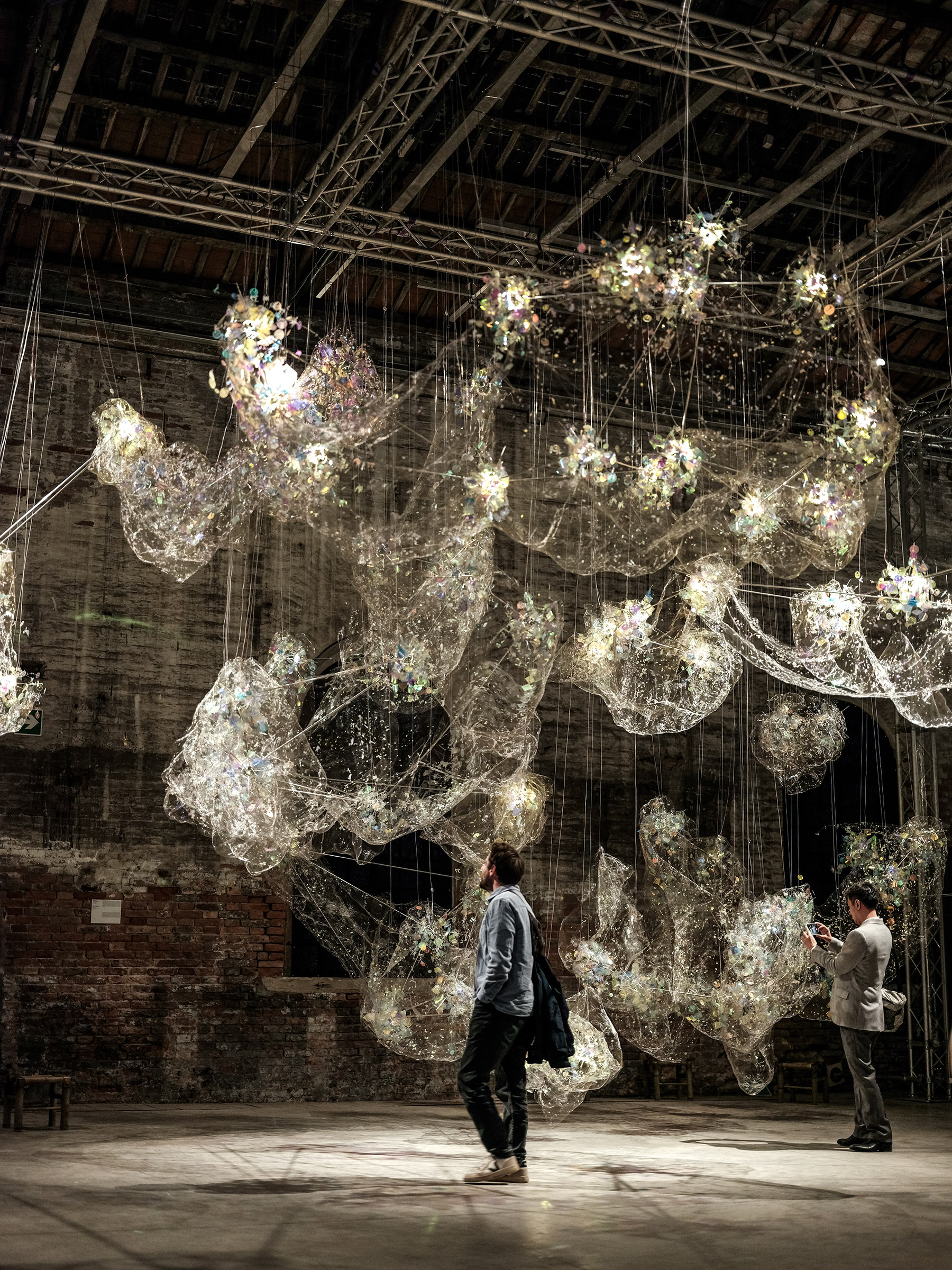At Venice Biennale, architects offer a poetic interpretation of nature, spirit, and circular design for a changing world, Deng Zhangyu reports.

At the 2025 Venice Architecture Biennale, a mesmerizing installation featuring a hanging green dome at the China Pavilion has captivated global audiences.
Titled Vault of Heaven, the creation invites visitors to stand beneath it and watch as it slowly rotates, projecting a visual tapestry of birds, fish, deer, and rabbits, symbols rooted in traditional Chinese culture that reflect humanity's connection with the cosmos.
Its creator, Wang Zigeng, recalls being frequently asked about the stories illustrated within the dome when the pavilion opened in May. The installation's rotating layers immerse visitors in a dynamic representation of the Chinese philosophical worldview.
The green dome is designed like a caisson ceiling, or zaojing in Chinese, a decorative architectural feature found in traditional Chinese buildings, often located on the ceilings of ceremonial halls, symbolizing a link between heaven and earth.
It also uses bamboo-weaving craft of traditional Chinese lanterns to build its framework.
READ MORE: Built on solid foundations
"This installation shows the unique Chinese ideas about the relationship between humans and nature, the desire for harmony, the continuous cycle of life," says Wang, founder of Beijing-based PILLS Architects.
Wang notes that many installations exhibited at the China Pavilion, which incorporate Eastern philosophical thought and embody unique characteristics of Chinese culture, are very popular among visitors at this architectural exhibition.
Many of the works exhibited there draw inspiration from traditional culture, such as the installation 12 Rhythms in Liangzhu, which is inspired by the Liangzhu culture, a Neolithic culture that existed in the Yangtze River Delta region of China more than 5,000 years ago and is known for its sophisticated jade carving.

Another standout is the Dunhuang Constellation by architects Zhang Jiyuan and Bu Xiaojun, inspired by the dome of Cave 285 at the Mogao Caves in Dunhuang, Gansu province, where one of China's finest Buddhist arts is housed.
The dome of Cave 285 can be considered a miniature cosmic civilization: the Sun God and Moon God from Sogdiana, Brahma and Ganesha from India, and Fuxi and mythical birds from China come together to create a spiritual star map that transcends time and space through flowing lines and vibrant colors.
These elements have been crafted into a 12-meter three-dimensional spatial structure, recreating an otherworldly vision of the universe.
Architect Ma Yansong, also the chief curator of the China Pavilion, says that many of the works on display are by young Chinese architects.
These pieces aim to demonstrate how the new generation interprets traditional Chinese culture while addressing modern and future challenges.
The Venice Architecture Biennale is an essential event for enthusiasts of architecture and design. Biennially, architects, designers, and creatives from around the globe convene in Venice to exhibit their work and engage in discussions about the latest trends in the architectural field.
The theme of the 19th International Architecture Exhibition of the Venice Biennale 2025 is: "Intelligens. Natural. Artificial. Collective".
The China Pavilion responds by showing how spiritual and philosophical values from Chinese tradition can offer solutions in a future shaped by artificial intelligence and climate change.
"We want to provide solutions from China and let the world witness its wisdom," Ma says.
Wang, now 41, who studied at Princeton University, says he was trained in Western architectural principles.
Over time, however, he has become increasingly drawn to the philosophical depth of Chinese culture.

Themes such as the relationship between humans, nature and the universe, as well as perspectives on life and the belief in the spiritual essence of all things, have provided unique inspiration for his architectural work.
These influences are also reflected in his pieces displayed at the Biennale.
Another of Wang's works, Circularity Handbook, commissioned by Carlo Ratti, the chief curator of this year's Biennale, is a special installation that transforms a real handbook into a three-dimensional book artwork, offering a sustainability guide tailored for the Biennale participants.
Inspired by lifecycle philosophy and the structure of pop-up books, Wang's installation incorporates various Chinese paper-cutting arts and draws inspiration from the techniques used in shadow puppetry and engraved bricks found in traditional Chinese buildings.
This 6-meter-tall pop-up book installation can be folded to one-eighth of its original size, for easy transport. It was constructed in two factories in China and shipped to Venice.
ALSO READ: Artist celebrates Belt and Road, one brick at a time
"Using waste, low-carbon and bio-based resources, the works demonstrate how a circular mindset can be both ecologically responsible and culturally inventive," says Ratti.
Wang's Vault of Heaven creates a metaphysical story of Chinese philosophy, using the simplest materials such as recycled protective netting commonly found in construction sites.
On the other hand, the pop-up book installation employs traditional paper-cutting techniques to convey an architectural design concept focused on sustainability and zero waste, a vision also promoted by the Biennale.
"These works, drawn from cultural uniqueness, especially on the international stage, showcase an Eastern approach and sensibility to the world in the field of architecture," says Wang, who also teaches at the School of Architecture at Central Academy of Fine Arts.
Contact the writer at dengzhangyu@chinadaily.com.cn


